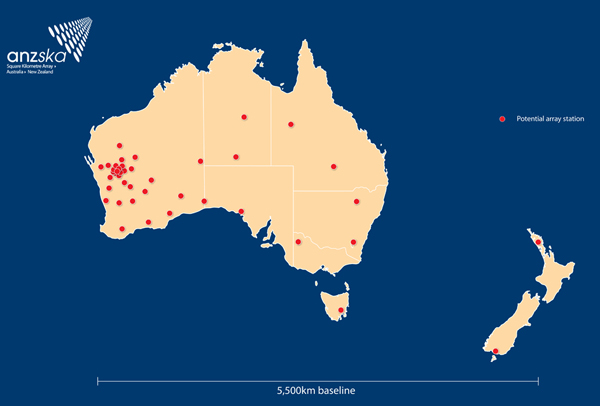By Estelle Asmodelle

Recent reports on the selection of the site for the Square Kilometre Array (SKA) have suggested that South Africa offers the best site and a panel of advisors recommended the SA site over Australia. The argument was put that the SA site was cheaper for construction, yet Australia had lower insurance fees, and primarily that the SA site was at a higher altitude.
The issue of altitude is really irrelevant here for at higher frequencies water vapour, or Scintillation (the distortion of waves moving through varying densities) can become a problem, but not so much for long radio waves, the bigger problem there is  radio frequency interference. Australia would be the best place for SKA, especially in WA which is ‘radio quite,’ not so in South Africa. Most long wave radio dishes are low lying. Altitude is more important for millimetre or sub-millimetre arrays.
I think this is really a political issue, South Africa really needs help financially and the SKA would boost their economy. I just hope that Australia is chosen, for South Africa’s site is not as remote and within 10 years, of completion, the site could suffer considerable radio interference problems, which would seriously degrade its operational status.
And also South Africa has many other issues, such as social unrest which could affect the operation of the telescope, or the employees. The argument that SA would be best as they have already started building the array, but it’s also true of Australia, who under the project name ASKAP, or the Australian Square Kilometre Array Pathfinder have already deployed some of the planned 36 dishes which will be complete in 2013, and can be integrated into the SKA if Australia is chosen, some dishes have already seen first light. See the site:
ASKAP, or the Australian Square Kilometre Array Pathfinder
http://www.atnf.csiro.au/projects/askap/index.html
See the status of the ASKAP site here in real time – updated often:
http://www.atnf.csiro.au/projects/askap/askap-live/
Don’t take my word for it – see Brian Boyle’s burb on the advantages Australia offers for the SKA:
http://www.ska.gov.au/Pages/BrianBoyle’s2012SKAUpdate.aspx
Some say that people who are astronomers, or students like me who will be looking for placement soon, are just feathering their nest – not true, for most of the people who will work on these sites will be from all over the world, the very cream of the crop, and probably not be Australian to a large extent.
So in fact we are further along than SA. So why the support for SA – word is, as I’ve eluded too, it’s really about politics not science – see this article:
http://www.gizmodo.com.au/2012/02/ska-bid-should-come-down-to-science-not-politics/
The last thing to bear in mind – Australia will soon have the NBN rolled out all over the country – this will assist the data handling to a very large extent – certainly by the time the SKA is complete we will have one of the best broadband networks in the world!
Interestingly the last big astronomy project SA was involved in had endless imaging problems (Although an optical site), and still does to an extent, and even more recently, poor broadband and operating problems:
And read more here:
http://www.southafrica.info/about/science/salt-telescope.htm
All in all the remote WA site is best suited for such an astronomical site for several reasons but most importantly the size of our site  – see the map for details:
